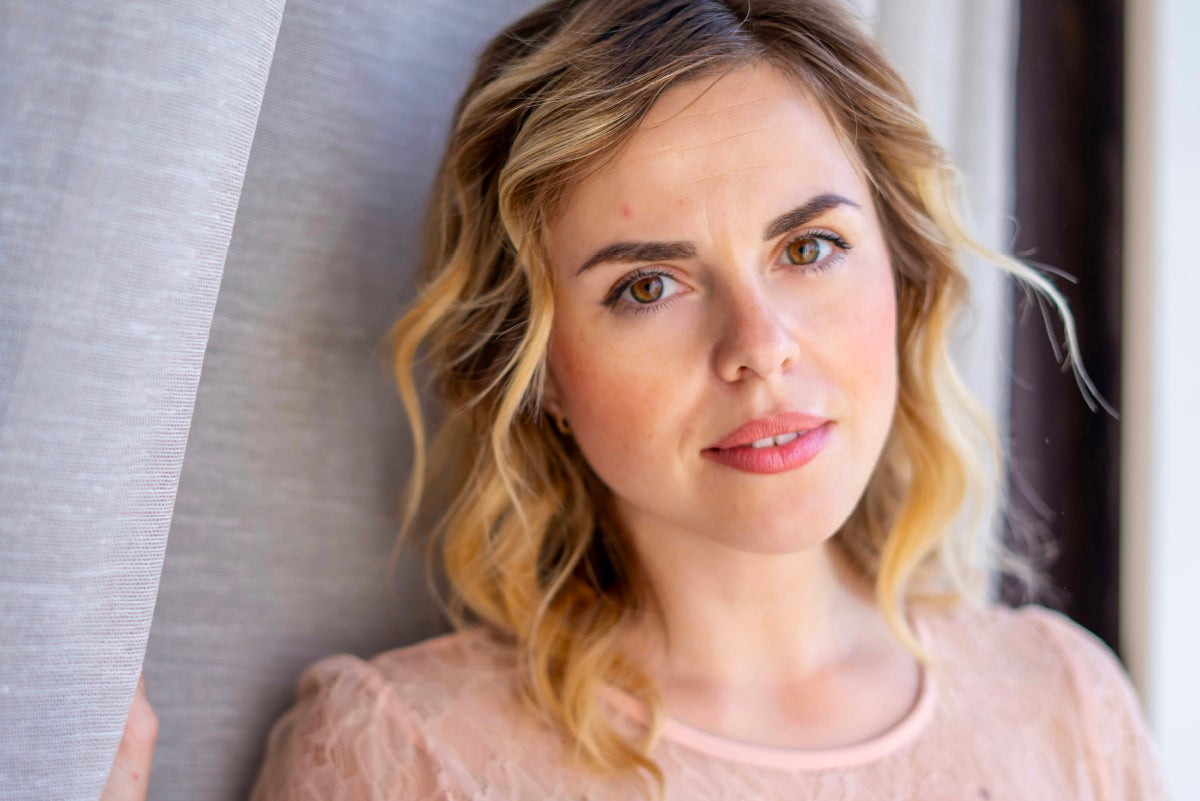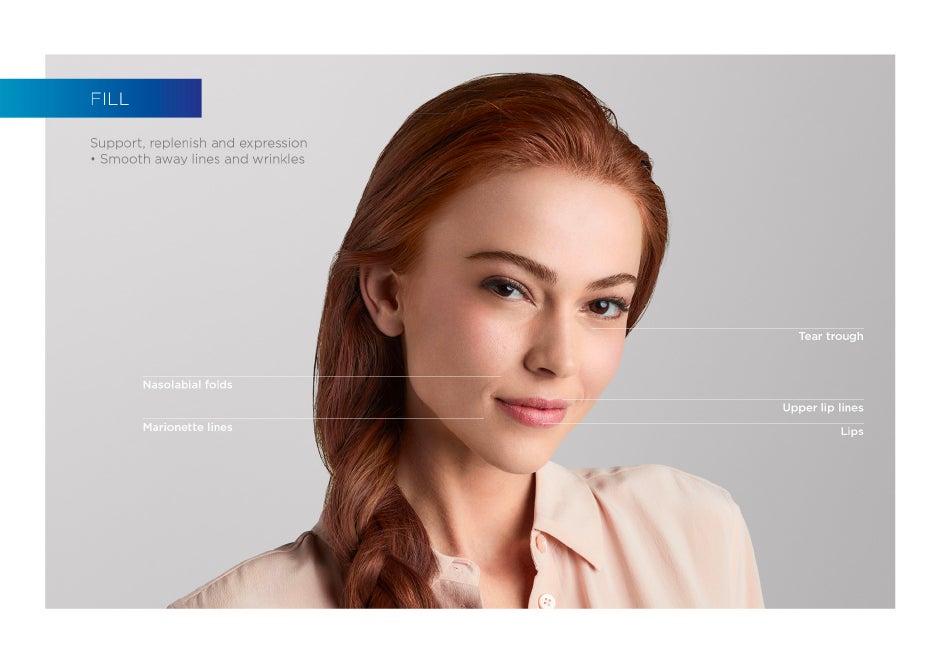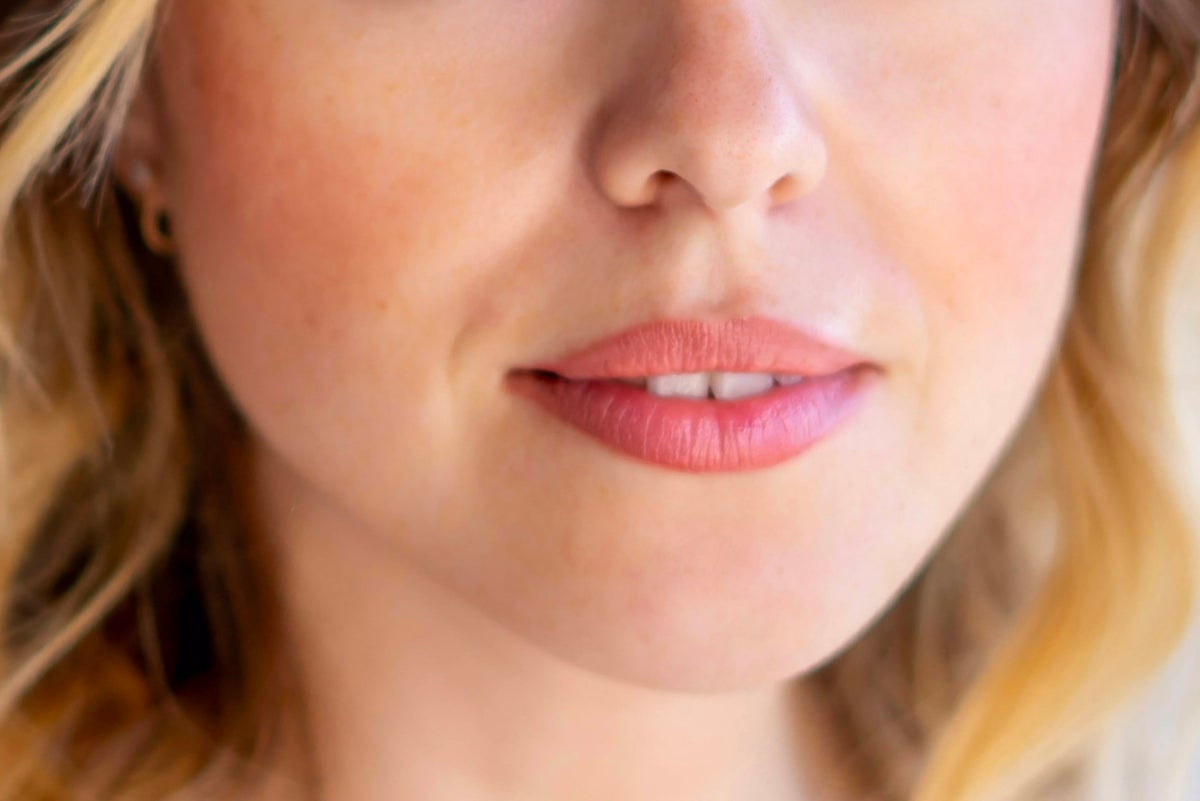
Restylane and Restylane Refyne are dermal fillers that provide long-lasting reduction of lines and wrinkles, such as nasolabial folds (smile lines) and marionette lines (laugh lines).1 With Restylane and Restylane Refyne you get tailored and natural results that leave you filled with confidence.2
Why fill with Restylane?
As we age, our skin becomes thinner and less elastic, and its ability to retain water is reduced. This results in the appearance of fine lines and wrinkles, and you may feel that you look tired, old or sad. Treatments with dermal fillers help to restore and maintain your youthful appearance and regain lost confidence.3
Restylane is a firmer dermal filler that can be used to fill wrinkles where you have good tissue coverage. Restylane Refyne is a softer and more flexible dermal filler that can be used for the treatment of more dynamic areas of your face, such as around the lips, the nasolabial folds and the marionette lines.4 Restylane and Restylane Refyne help you refine your looks and fulfill your individual needs and desires.
Restylane and Restylane Refyne last up to at least 18 months with one retreatment.5

Restylane and Restylane Refyne treatment areas
Restylane and Restylane Refyne are dermal fillers that are used to reduce lines and wrinkles and give you a refined and natural look. Areas that can be treated include fine lines around the mouth and eyes, marionette lines and nasolabial folds.
“And if you then all of a sudden see how signs of aging, signs of tiredness or negative expressions are erased from your face, that’s a very positive experience and usually you can see this when the patient looks in the mirror. Their face starts smiling, and that is a very rewarding moment really for an aesthetic doctor.”
Christoph Martschin, dermatologist, Sweden

Your Restylane treatment
A treatment with Restylane takes approximately 15-45 minutes, depending on the area that will be treated. Sometimes you might need a touch-up treatment about two weeks after the initial treatment to optimize your results. Most Restylane fillers contain a local anesthetic, lidocaine, that takes away most of the discomfort during treatment.
Immediately after your dermal filler treatment, you may experience some post-treatment side effects, such as redness, swelling, pain, bruising or tenderness at the treatment site. These side effects usually disappear within a few days or up to two weeks after injection. Though fillers are minimally invasive, they still carry some risks. Before the treatment, you should discuss all possible risks and benefits with your healthcare practitioner.
Restylane gives you long-lasting but non-permanent results, meaning that you can continuously refine your looks.

How it works
Hyaluronic acid is a substance that has a unique ability to bind water. Hyaluronic acid occurs naturally in our bodies and in all layers of our skin. It keeps body tissues soft, hydrated and flexible. However, as we age, the body’s ability to produce hyaluronic acid lessens, leading to dry and thinner skin. Native hyaluronic acid in the body degrades quickly, in one to two days. To make the hyaluronic acid in Restylane and Restylane Refyne last longer - for up to 18 months or more6 - Galderma has used stabilization technologies that delay degradation.
Restylane contains a hyaluronic acid gel with a firmer consistency and Restylane Refyne contains a gel with a more flexible consistency to target different kinds of lines and wrinkles.
Restylane was the first-ever non-animal stabilized hyaluronic acid filler, when it was launched in 1996. It has become the gold standard of dermal fillers and is the injectable filler every other filler brand is compared with.

References
- Philipp-Dormston WG et al. Dermatol Surg 2018;44(6):826-832.; Weiss RA et al. Dermatol Surg 2016;42:699–709.; Narins RS et al. Dermatol Surg 2011;37:644–650.
- Talarico S et al. Dermatol Surg 2015;41:1361–1369.; Rzany B et al. Dermatol Surg 2012;38:1153–1161.
- Talarico S et al. Dermatol Surg 2015;41:1361–1369.; Rzany B et al. Dermatol Surg 2012;38:1153–1161.
- Philipp-Dormston WG et al. Dermatol Surg 2018;44(6):826-832.
- Narins RS et al. Dermatol Surg 2008;34:S2–S8.; Rzany B et al. Dermatol Surg 2017;43:58–65.
- Narins RS et al. Dermatol Surg 2008;34:S2–S8.; Rzany B et al. Dermatol Surg 2017;43:58–65.



 Back to top
Back to top